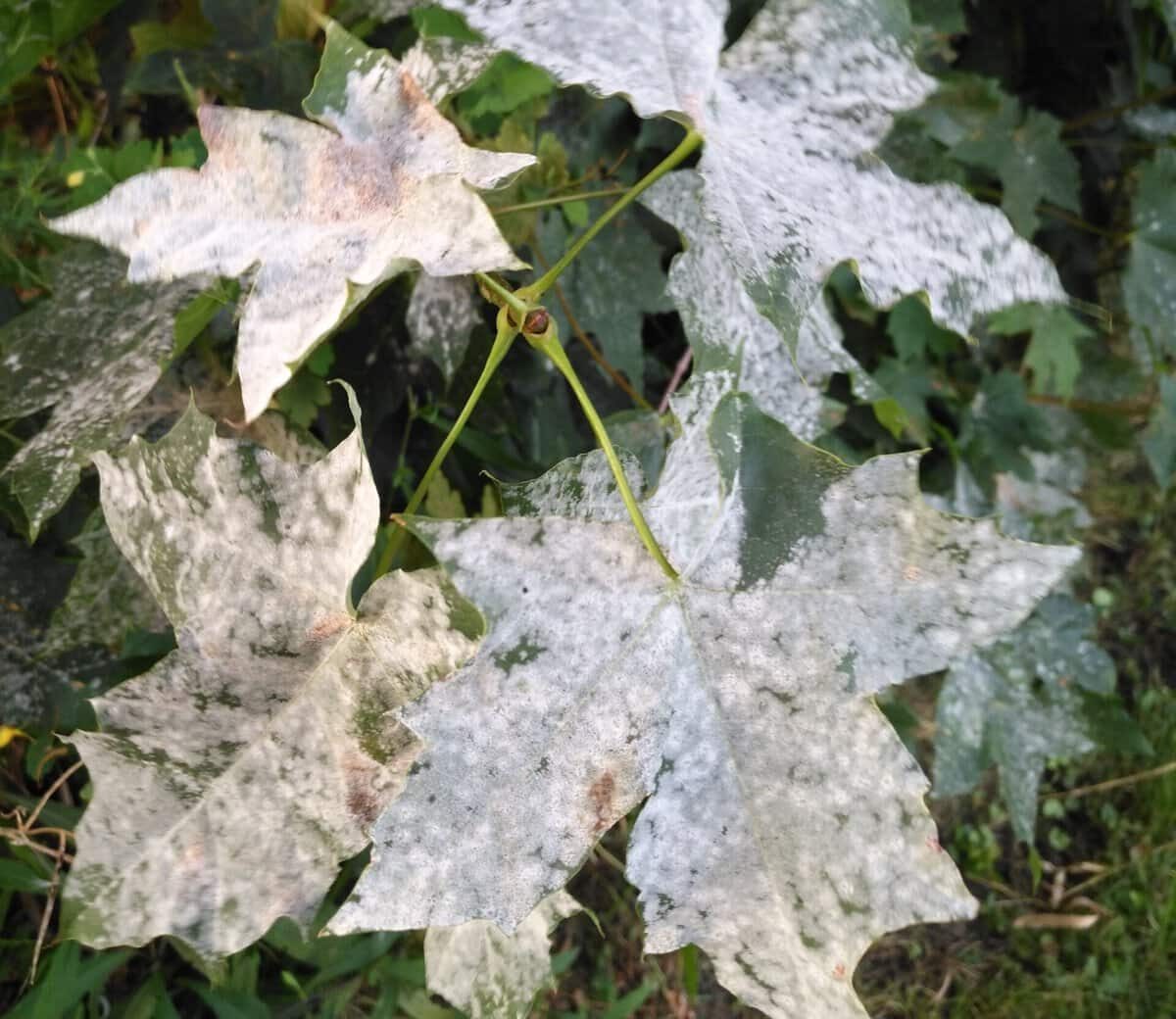As we move into summer, we sometimes start to see more diseases pop up in our gardens.
Some plants are more prone to certain diseases than others, but even so, you can take some precautions to limit the amount of damage that the disease will inflict on the plants.
Wondering about that white film on the leaves of your plant?
As I have been visiting gardens over the past few weeks, I am starting to see more and more examples of powdery mildew: a common fungal disease, infecting a wide variety of plants.
Although there are many different species of powdery mildew, they can all be controlled in the same manner.
The most commonly affected vegetable plants include anything in the squash family such as cucumbers, melons, cucumbers and pumpkins as well as tomatoes, eggplants and peppers.
A few of the most susceptible ornamental plants are roses, peonies, summer phlox, bee balm, magnolia, ninebarks and lilacs.
Powdery mildew spores drift into your garden with the wind or, if you’ve had powdery mildew occur in the past, new outbreaks may also come from dormant spores in old vegetation or weeds nearby.
When the fungus begins to take over one of your plants, a film of white mildew, made up of many spores, forms across the top of the leaves.
These spores are then carried to other plants by the wind and splashing water.
Powdery mildew can slow down the growth of your plant and, if the infection is severe enough, will reduce flower or fruit yield and quality.
It will not kill your plant, but it makes it look unsightly.
If the plant is continually infected by mildew, it will cut down on the amount of nutrition the plant can provide for itself and will greatly weaken the plant.
We often associate mildew with moisture, but powdery mildew thrives in warm, dry climates (15, 20 to 27 C), though it does require high relative humidity around the plant in order to spread.
So, after a long dry period or in areas with very little air circulation, powdery mildew will be more of an issue.
Young foliage is most susceptible to damage — leaves turn yellow and dry out.
The best way of controlling powdery mildew is proactive prevention. Here are some tips to prevent mildew:
- Choose plants for your garden that are resistant to powdery mildew. Many mildew-resistant varieties have been developed and can be bought at garden centres.
- Examine plants in your garden that have a history of powdery mildew once a week. As soon as you spot mildew starting to develop on a plant, pinch off the worst of the leaves.
- Do not compost any infected plant, as the disease can still be spread by the wind and persist in the composted materials.
- Selectively prune overcrowded areas to increase air circulation around your plants; this helps to reduce relative humidity.
- After pruning off infected parts, do not allow pruning shears to touch healthy leaves. First sterilize your pruners with rubbing alcohol.
- Do not allow soil to dry for too long, especially around susceptible plants. A regular watering schedule will help to keep plants healthy.
- Fungicides should only be used to protect high-value plants with a history of disease. Fungicides will not cure or remove existing powdery mildew infections, but will help the disease from getting worse. Once the majority of leaves have leaf spots, it is too late to treat. If using a fungicide earlier in the season as a preventative or to help kill any overwintering spores, use something organic such as lime sulphur.
- Make sure you clean up any infected leaves in the fall and do not leave them at the base of the plants where the spores can re-infect in the spring.
These proactive tips are also the way to deal with fungal leaf spots such as black spot and rust.
A pinch of prevention goes a long way!
Joanne Young is a Niagara-on-the-Lake garden expert and coach. See her website at joanneyoung.ca











